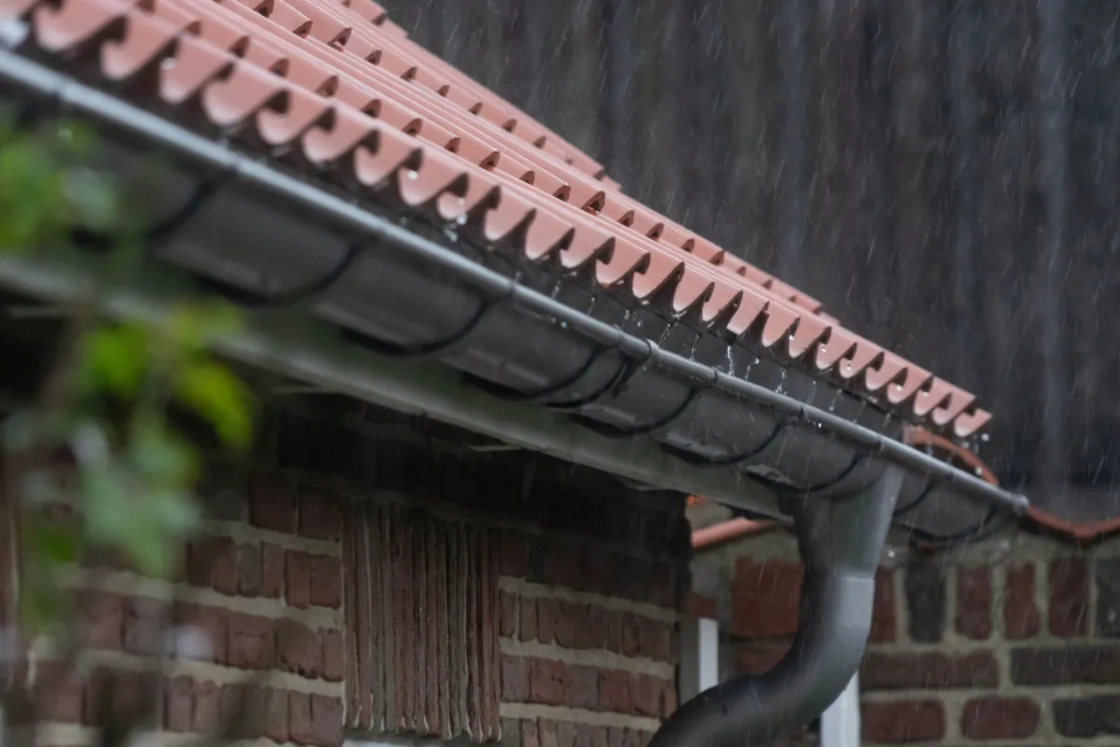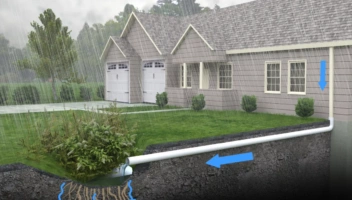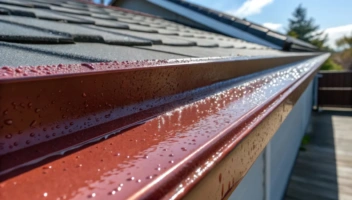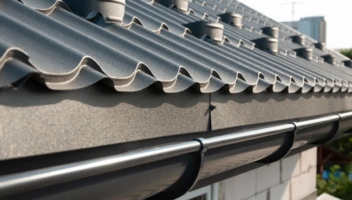Optimal Gutter Placement Relative to Drip Edge

When it’s time to install new gutters, there are many factors to consider, including material, style, and proper placement. But an often-overlooked detail is the key question: how far should the gutter be from the drip edge? This seemingly small detail plays a big role in helping protect your home from rain and storm damage.
In this article:
- Understanding Drip Edges and Gutters
- Why is Proper Spacing Important?
- Recommended Distance Between Gutter and Drip Edge
- Installation Best Practices
- Common Mistakes to Avoid
- Installation Tips
- Maintenance Tips for Gutters and Drip Edges
- Homeowners Need a Drip Edge
- Frequently Asked Questions
Understanding Drip Edges and Gutters
Definition and Purpose of Drip Edges
A drip edge is a thin metal flashing that is installed on the roof to direct water into the gutters. This flashing is usually metal but can be made from other materials and helps prevent water from getting trapped behind your gutters or in the roof itself. Drip edges are installed over the roof’s fascia board before your gutter is placed.
Functions of Gutters in Roof Systems
Gutters are an essential part of a home’s water management system. When it rains, they capture runoff and channel it away from the roof. Downspouts then carry the water away from your home’s foundation. By sending the water through a gutter system, you can help protect your roof, windows, roof shingles, and foundation from water damage or erosion.
Why is Proper Spacing Important?
Just having a drip edge in your gutter system isn’t enough. You have to ensure that the spacing between the gutter and the edge is correct to avoid potential issues.
- To help protect the fascia from rot and other water damage.
- To help ensure proper water flow from the drip edge to the gutter system.
- To help prevent leaks caused by water seeping between the gutter and drip edge.
Recommended Distance Between Gutter and Drip Edge
Your gutter should be positioned right under the drip edge, with the drip edge slightly overlapping the back of the gutter. Ideally, the distance should be roughly ¼” from the back of the gutter to the back of the drip edge. A larger gap can lead to leaks and potential roof damage.
Installation Best Practices
Whether you are a gutter DIY-er or you hire a team of professionals, it’s important to follow gutter installation best practices. No matter the size or style of your gutters, these tips can help you achieve a successful installation and extend the longevity of your system.
- Downspouts: Make sure downspouts direct water far away from the home to help prevent pooling near the foundation–ideally four to six feet.
- End Caps: Installing end caps on your gutters helps prevent rainwater leaks.
- Gutter Guards: Gutter guards help prevent debris from clogging the gutter, thus extending the lifespan of your system.
- Gutter Hangers: Gutter hangers are vital for properly securing your gutter system to your home’s fascia to ensure wind, rain, and heavy snowfall don’t pull it away from the house.
Common Mistakes to Avoid
One of the biggest mistakes homeowners make during installation is ignoring their local climate. Climates with heavier rain often require larger gutters to accommodate the additional water. If your gutter is too small, it can overflow, leak, or sag under the accumulated water.
Additionally, you need to consider the pitch or steepness of your roof. The steeper the roof, the more quickly water will flow down and accumulate in your gutter. Homes with very steep roofs need larger gutters since water collects more quickly, so the system must be able to hold that extra water.
Installation Tips
One of the biggest gutter system installation tips homeowners need to remember is to pick their system material wisely. For example, steel gutters are the most challenging to install for DIYers. This material is very heavy, which is why professionals are highly recommended. On the other hand, aluminum gutters are much easier for homeowners to install by themselves since they are lightweight and easy to cut to fit.
While DIY installation is possible, we don’t recommend that homeowners install rain gutters themselves. A professional installer or installation company is highly recommended for their safety, precision, and their ability to spot potential issues that can wreck a successful installation. The experts at LeafFilter can offer homeowners gutter installation estimates, repairs, upgrades, and maintenance to help keep their systems going strong for years to come.
Maintenance Tips for Gutters and Drip Edges
- Clean out gutters at least twice a year, usually in the spring and fall
- This should be more often in areas with heavy fall foliage and/or rain
- Install gutter guards to help prevent clogs and decomposing debris from accumulating in the gutter.
- Repair any gutters that come loose.
- Check your gutter system for damage after major storms.
- Inspect the fascia board while cleaning out gutters to check for any damage.
When to Replace Gutters
Gutters can last an average of about 20 years. Although some materials, like copper, are known to last much longer, regularly inspecting your gutters is essential for checking for damage. When you start to notice significant damage, such as sagging, rust spots, or leaks, it may be time to replace your gutter.
Homeowners Need a Drip Edge
While gutters play an important role in helping protect your home from water damage, your drip edge is also crucial. When the two are installed correctly, they can help prevent rot for years to come, so long as they are installed at the right distance. However, the best way to ensure proper installation is to hire experts like the professionals at LeafFilter, who can be at your side from project start to finish and even beyond for maintenance.
Frequently Asked Questions
What if my gutters are too close/far from the drip edge?
They need to be around ¼” apart from the back of the drip edge to the back of the gutter, with the gutter under the drip edge. If they are too far or too close, the gutter needs to be adjusted to close the gap. Otherwise, your home is at risk for water damage to your home’s fascia, roof, and other parts.
Can I adjust the spacing of existing gutters?
Yes! You need to adjust the gutter hangers to bring your gutters closer or further away from your drip edge.
Should the drip edge touch the gutter?
No, the drip edge should be installed behind the gutter so that it hangs into it. That way, the edge directs the water into the gutter. The back of the gutter should slightly overlap the drip edge.
How close should the gutter be to the roof edge?
Your gutter should be around 2-3 inches from the roof edge.
Should a gutter extend past the roof edge?
Yes, the gutter should extend beyond the edge of the roof. This way, it can catch water from the drip edge and keep water away from the side of your home.
What should be installed first: a drip edge or gutters?
The drip edge should be installed before the gutter. Once installed, the gutter should sit slightly under or behind the edge, allowing water to flow directly into the gutter itself.


